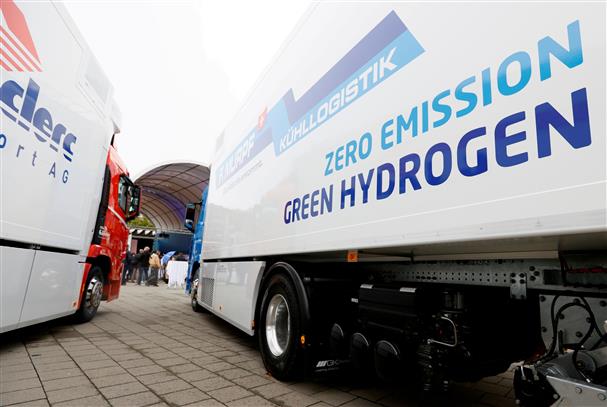
Photo for representation. Reuters
Vibha Sharma
Chandigarh, January 5
The Union Cabinet on Wednesday approved the National Green Hydrogen Mission, aiming to make India a global hub for production, utilisation and export of the green, zero-carbon energy and its derivatives and a reduction in dependence on imported fossil fuels and feedstock.
Prime Minister Narendra Modi had formally announced the setting up of the Mission in August 2021, putting the zero-carbon fuel at the centre-stage of India’s energy requirements.
“Of every effort being made by India today, the thing that is going to help India with a quantum leap in terms of climate is the field of Green Hydrogen. To achieve the goal of Green Hydrogen, I am announcing the National Hydrogen Mission today with this Tricolour as a witness. We have to make India a global hub for Green Hydrogen production and export in the ‘Amrit Kaal’,” the Prime Minister had said in his Independence Day speech in 2021.
Calling it a fuel of the future, experts believe Green Hydrogen could supply up to 25% of the world's energy needs by 2050 and become a 10 trillion-dollar addressable market by 2050. While several industry majors, including state-run oil companies are turning towards adopting this cleanest form of energy, the formal launch assures investors of policy support, say officials.
The government expects wide-ranging benefits, including creation of export opportunities for Green Hydrogen and its derivatives, investments and creation of jobs.
Given that energy is integral for any fast-growing economy, PM Modi in his second tenure outlined a new energy map of India with seven key drivers and one of them was the development of emerging fuels, including Green Hydrogen. He also set a 2047 deadline for becoming self-reliant in energy, The Tribune reported in August 2021.
“India has to make a resolution to become energy independent before the completion of 100 years of independence and our roadmap is very clear for the same. It should be a gas-based economy.
“There should be a network of CNG & PNG across the country. There should be a target of 20 per cent ethanol-blending. India is moving ahead with a set goal. India has also made a move towards Electric Mobility,” he had said.
Green Hydrogen is produced by electrolysing water using electricity from renewable sources.
Meanwhile, the Mission will support pilot projects in emerging end-use sectors and production pathways.
Regions capable of supporting largescale production and/or utilisation of hydrogen will be identified and developed as Green Hydrogen Hubs.
The Ministry of New and Renewable Energy will be responsible for overall coordination and implementation of the Mission.
Outlay
*Initial outlay for the Mission will be Rs 19,744 crore, including Rs 17,490 crore for the SIGHT programme, Rs 1,466 crore for pilot projects, Rs 400 crore for R&D, and Rs 388 crore towards its other components.
*SIGHT (Strategic Interventions for Green Hydrogen Transition Programme) has two distinct financial incentive mechanisms – targeting domestic manufacturing of electrolysers and production of Green Hydrogen.
*MNRE will formulate scheme guidelines for implementation of respective components.
Expectations
*Development of green hydrogen production capacity of at least 5 MMT (Million Metric Tonne) per annum with an associated renewable energy capacity addition of about 125 GW in the country.
*Over Rs 8 lakh crore in total investments.
*Creation of over 6 lakh jobs.
*Cumulative reduction in fossil fuel imports over Rs one lakh crore.
* Nearly 50 MMT per annum of CO2 emissions are expected to be averted by 2030.
Benefits
*The government expects wide-ranging benefits, including creation of export opportunities for Green Hydrogen and its derivatives.
*Decarbonisation of industrial, mobility and energy sectors.
*Reduction in dependence on imported fossil fuels and feedstock.
*Development of indigenous manufacturing capabilities.
*Creation of employment opportunities and development of cutting-edge technologies.
Join Whatsapp Channel of The Tribune for latest updates.



























